The SMMT described a “bumper September”, on the grounds that registrations for the month and the year-to-date (YTD) period were up by 21.0% and 20.2% respectively. That is certainly an improvement, but it is still 42.0% lower than the peak of September 2016. That shows how big a mountain the car market still has to climb, writes David Francis.
The market is currently heavily skewed towards fleet sales, which have risen by 42.3% YTD. This is due to the fact that car manufacturers concentrated on sales to private companies during the period of chip shortages, so the YTD market share of fleet sales (52.8%) has now returned to where it was in YTD 2019 (52.4%). Conversely, private demand barely changed (up just 1.8%) as both rising car prices and higher interest rates have made PCPs less affordable.
The other macro-trend worth watching is that BEV (battery electric vehicle) market share growth has largely stalled (see chart). At first glance that seems a little odd. BEVs are particularly attractive to fleets thanks to BIK advantages, yet BEV market share is not rising (in fact it fell slightly in the month of September). The reason is that BEV sales to private buyers fell heavily in September 2023 (-14.3%), with BEV taking less than 10% of retail sales.
The SMMT described a “bumper September”, on the grounds that registrations for the month and the year-to-date (YTD) period were up by 21.0% and 20.2% respectively. That is certainly an improvement, but it is still 42.0% lower than the peak of September 2016. That shows how big a mountain the car market still has to climb, writes David Francis.
The market is currently heavily skewed towards fleet sales, which have risen by 42.3% YTD. This is due to the fact that car manufacturers concentrated on sales to private companies during the period of chip shortages, so the YTD market share of fleet sales (52.8%) has now returned to where it was in YTD 2019 (52.4%). Conversely, private demand barely changed (up just 1.8%) as both rising car prices and higher interest rates have made PCPs less affordable.
The other macro-trend worth watching is that BEV (battery electric vehicle) market share growth has largely stalled (see chart). At first glance that seems a little odd. BEVs are particularly attractive to fleets thanks to BIK advantages, yet BEV market share is not rising (in fact it fell slightly in the month of September). The reason is that BEV sales to private buyers fell heavily in September 2023 (-14.3%), with BEV taking less than 10% of retail sales.
This is particularly worrying for two reasons.
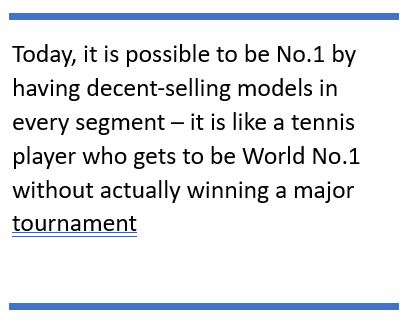 Firstly, there is a widespread perception amongst the public that the pressure to buy BEVs has been lifted with the government announcement that the deadline for phasing out petrol and diesel cars has been pushed back to 2035. This is part of the government’s mood music which is “We are pro-motorist and anti-ULEZ.” Hence buyers would be forgiven for thinking that the government is no longer focused on electric cars.
Firstly, there is a widespread perception amongst the public that the pressure to buy BEVs has been lifted with the government announcement that the deadline for phasing out petrol and diesel cars has been pushed back to 2035. This is part of the government’s mood music which is “We are pro-motorist and anti-ULEZ.” Hence buyers would be forgiven for thinking that the government is no longer focused on electric cars.
However, the fact is that car companies are still being ordered to sell BEVs. The latest mandate is for 28% of cars to be BEV by 2028 and 80% by 2030.
Secondly, the market is in danger of being distorted. Every fleet car ultimately has to be sold to a private buyer. If the supply of used fleet cars becomes radically out of line with what private buyers actually want, the result is inevitable: a big fall in the value of used BEVs, which means a big rise in their running costs.
In turn that will mean fewer private buyers will want to buy a new BEV – and how will the car companies meet their BEV targets then?
 Auto Trader’s Retail Price Index for October reports that EV prices are down 19.6% on 12 months ago, although Auto Trader does say that prices are stabilising. However, if ever more fleet EVs hit the used car market in 2024 and 2025, will there be a further drop?
Auto Trader’s Retail Price Index for October reports that EV prices are down 19.6% on 12 months ago, although Auto Trader does say that prices are stabilising. However, if ever more fleet EVs hit the used car market in 2024 and 2025, will there be a further drop?
In terms of manufacturers, there is an interesting paradox. The top-selling manufacturer (VW) does not have a single model in the Top 10 in either the month of September or YTD. From the 1980s until the pandemic, the situation was almost always that the best-selling manufacturer was Ford and the best-selling model was the Escort, Focus or Fiesta.
Today, it is possible to be No.1 by having decent-selling models in every segment – it is like a tennis player who gets to be World No.1 without actually winning a major tournament.
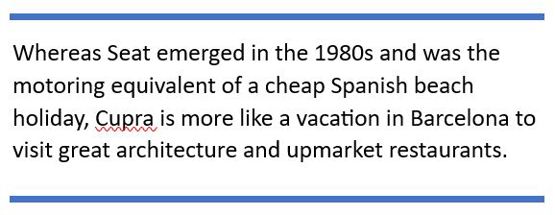 Ironically, the UK’s best-selling car is once again a Ford (the Puma), for the first time since 2020. However, the narrowness of Ford’s mainstream range (just two crossovers and one hatchback in current production) means one best-selling model is not enough to reach the No.1 position.
Ironically, the UK’s best-selling car is once again a Ford (the Puma), for the first time since 2020. However, the narrowness of Ford’s mainstream range (just two crossovers and one hatchback in current production) means one best-selling model is not enough to reach the No.1 position.
Behind Ford (but only just) is Audi, the only one of the three German premium brands to have increased market share this year. The highlight of Audi’s performance has been the A3, which is now the UK’s best-selling C-segment hatchback, ahead of the Golf and Focus. Readers of a certain age will remember the A3 being launched as the lower-volume, more upmarket alternative to mainstream small family hatchbacks. Now it is the mainstream hatchback.
In fourth place is Kia, despite a slight decline in market share this year (from 6.8% to 6.2%). Kia’s priority will be to maintain its position against a resurgent Toyota in the short-term and a growing list of Chinese brands in the medium-term.
Kia has demonstrated how quickly a brand can grow in the UK, and it won’t want to transition from being the predator of European brands to becoming the prey of Chinese ones.
Of the other Top 10 brands, BMW has lost share due to falling sales of the 3-Series and the X3. Remarkably, the new Polestar 2 has outsold the evergreen 3-Series YTD – even Polestar probably did not plan for that at launch.
Meanwhile, Vauxhall has slipped back slightly, as the Astra is conspicuously failing to make headway. The classic pattern for a non-premium model is to build up sales in the first year or so, have a period of healthy sales for three or four years thereafter, and then experience an inevitable decline which is managed via incentives. The Astra seems in danger of missing out on the profitable middle phase altogether.
Finally, Nissan has grown share, but is still some way behind the 5.25% it was achieving 10 years ago. With both the Juke and the Qashqai being in their prime, any further sales growth will need to come from new models. However the next Sunderland-built model (a BEV crossover to replace the Leaf) is not expected until 2026.
|
Highest Growth Major Brands*
|
YTD Sept
|
| Cupra | 78.32% |
| MG | 60.94% |
| Porsche | 48.58% |
| Skoda | 48.52% |
| Suzuki | 47.72% |
|
Lowest Growth Major Brands*
|
YTD Sept
|
| Fiat | -9.56% |
| BMW | -1.80% |
| Dacia | 0.83% |
| Mercedes-Benz | 2.37% |
| Mini | 2.50% |
|
* Brands with at least 1.0% market share YTD 2023 |
Amongst the mid-sized brands outside the Top 10, the best results have come from MG (inevitably), Skoda and Volvo. The main reason for MG’s stellar growth (up 60.9%) is the MG4, which is now the fourth best-selling C-segment hatchback, just behind the Ford Focus. Skoda is up 48.5%, with sharply rising sales of the Karoq, Enyaq and Occtavia. Skoda clearly didn’t get the email about the collapse of the large family car sector (aka D-segment): Superb sales are up by over half and it now takes 42.1% of what was once known as the Mondeo class.
Meanwhile Volvo, having dropped its saloons and estates in the UK, is enjoying growing success with its crossovers: the class-leading XC40 outsells its nearest rival, the Audi Q3, by 89% YTD.
 However, the biggest successes have come from two new European brands, Polestar and Cupra.
However, the biggest successes have come from two new European brands, Polestar and Cupra.
Polestar is up by 157.8%, and is in the process of overtaking Jaguar, with Lexus the next brand in its sights.
Cupra is up by 78.3%, and rather reflects the change in Spain’s image: whereas Seat emerged in the 1980s and was the motoring equivalent of a cheap Spanish beach holiday, Cupra is more like a vacation in Barcelona to visit great architecture and upmarket restaurants.
Both Polestar and Cupra show how much more volatile the UK car market has become in recent years. However, it does not mean newness is all – the brand still has to deliver.
After all, Lexus was an exciting new brand in the 1990s and it still struggles to get to 1% market share after three decades of trying. Unfortunately, for every Tesla there is an Infiniti – indeed the recent history of the UK car market contains more Infiniti-style failures than Tesla-style successes.
Login to continue reading
Or register with AM-online to keep up to date with the latest UK automotive retail industry news and insight.



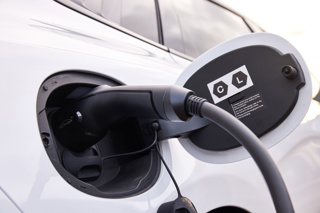

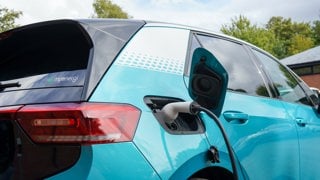
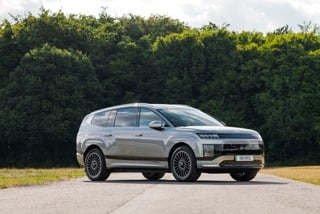












Login to comment
Comments
No comments have been made yet.